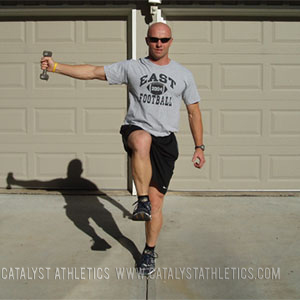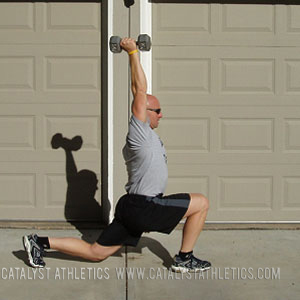June 12 2006

As you will discover, training with dumbbells offers multiple benefits. Their universal application makes them perfect for athletic training.
As a coach, one of the most potent applications for the dumbbell is the use of unilateral training to address weaknesses on one side of the body. Unilateral training is simply working a single side of the body with one dumbbell.
Most all of us have a weaker side. These weaknesses are generally on the non dominating side of the body. The weakness may also be the result of a single or series of injuries. I personally work with athletes that have whole lists of injuries that occur on a single side. When they breakdown during a competition, it’s generally on this weaker side.
If these weaknesses are not addressed, the stronger muscles get stronger and the weaker side becomes weaker and tighter.
I’ve determined that most athletes are quad dominate. It’s natural to have stronger quads, but problems can occur when the hamstrings and glutes become weaker. They become tight and this can lead to issues along the entire posterior. It has gotten to the point at which if you walk away from me, I can see your weaker hamstrings and glutes.
One of the ways I like to address this weakness is with the hammer lunge series. I find that lunging will really shore up weaknesses and reeducate the hamstrings and glutes to fire and do their share!
You do not need a tremendous amount of weight. In fact, I usually start my athletes out with a 2-5lb dumbbell.
Here are some other pointers to get you started.
-Start with a 10 yard lunge.
-Sink the hips—don’t move the knee ahead of the ankle.
-Lift the leg parallel to the deck and pull the toe up to fully engage the glutes.
-Lunge forward and in reverse.
-Make note of the weaker side and perform an extra set.
-Don’t train to failure. Work on perfecting your form.

Dumbbell Front Hammer Lunge

Side Hammer Lunge
 Overhead Hammer Lunge
Overhead Hammer Lunge
